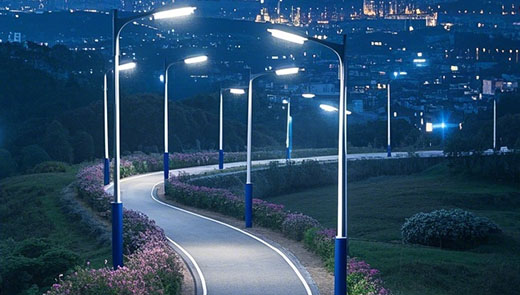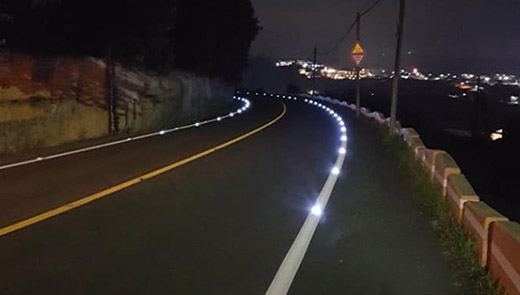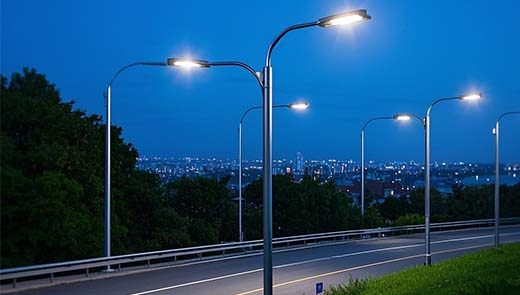Road Studs: Everything You Need to Know
In the low visibility of the bad weather, road traffic safety risks climbed significantly, fog days accident rate than normal weather can be higher than about 30%. At this time, although the road studs seem unobtrusive, but as a loyal defender of road safety, plays an extremely critical role, like a bright light in the darkness, for drivers to guide the way forward. Next, will be a comprehensive in-depth analysis of road studs, from basic concepts to cutting-edge innovations, to bring you a comprehensive understanding of these small facilities to protect travel safety.
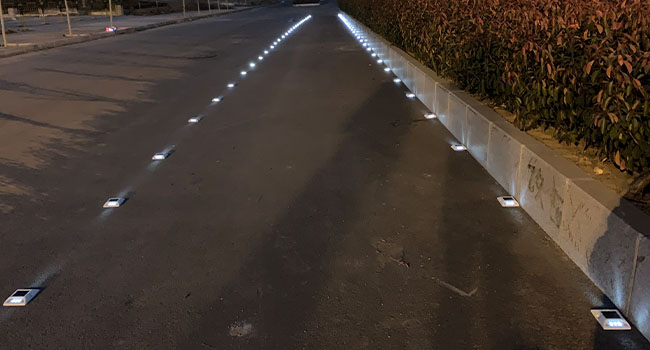
What are road studs?
Road studs are a key facility for road safety, and their main function is to enhance road visibility and accurately guide drivers. In fog, rain, snow and other inclement weather, its reflective function is particularly important. In the foggy highway, the driver's field of vision is seriously limited, and the reflective road studs can penetrate the fog, become a clear guide sign, so that drivers can see the road ahead. At night, road studs can clearly present road boundaries and lane positions, helping drivers to stay in the right lane and avoid deviating or breaking into the opposite lane, reducing accidents.
Studies have shown that the installation of road studs has a significant effect on reducing the incidence of accidents. For example, the installation of road studs on one regional highway resulted in a 20% reduction in accidents. This is due to the increased visibility and guidance provided by the road studs, which enables drivers to accurately judge road conditions, maintain a correct driving path and reduce accidents caused by poor visibility or lane departure.
The evolution of road studs
In the 1930s, British inventor Percy Shaw invented the “cat's eye” road stud, inspired by the reflection of a cat's eye while driving at night. The first road studs were made of glass, filled with reflective material and arranged in a straight line along the road to guide drivers. However, glass road studs were fragile and costly to maintain. Later, the road studs material evolved into plastic, which is lighter, more durable and less costly. At the same time, the reflective material was improved significantly, becoming brighter and more durable. road studs have become increasingly diverse in shape, size and color to meet different road needs, such as amber, red and green road studs used to indicate road edges, hazardous areas or changes in direction, respectively.
Types of road studs
Reflective road studs
Reflective road studs are the most common and are made of plastic, aluminum or glass. When illuminated by headlights, the reflective material on their surface will accurately reflect the light back into the driver's eyes, creating a clear visual guide and helping the driver to stay firmly in the lane. On highways and other roads with high speed limits, reflective road studs can always keep drivers alert and effectively avoid collisions. Reflective road studs made of different materials have their own characteristics, plastic lightweight, low cost, but the reflective effect is relatively weak; aluminum durable, reflective performance is good, but the cost is high; glass reflective effect is the best, but there are fragile, the weight of the problem.
Raised road studs (cat's eye studs)
A raised road stud, or “cat's eye stud” as it is often called, is made of plastic, rubber or metal and protrudes above the road surface.It creates a physical barrier between lanes that can significantly reduce the risk of frontal collisions and scrapes, while also clearly marking the edge of the roadway and facilitating the smooth passage of emergency vehicles. In sections where vehicles are prone to deviating from their lanes, raised road studs can remind drivers to stay in the correct lane through the vibration and sound generated when vehicles run over them. For example, in the mountainous areas of sharp turns, raised road studs allow drivers to sense the road boundaries and the direction of the curve through vibration when the vehicle is pressed, so that they can be ready to slow down and steer in advance.
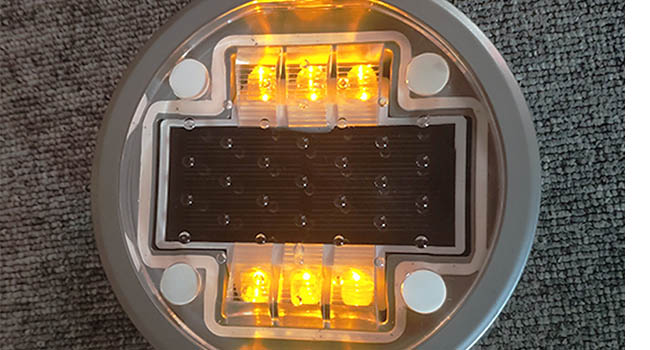
Temporary road studs
Temporary road studs are generally made of lightweight materials such as plastic or rubber, and are characterized by easy installation and removal. In construction sites, pedestrian areas and other areas with changing traffic flow, temporary road studs can quickly provide drivers with reliable visual guidance to ensure safety in complex environments. In the road construction area, temporary road studs can be quickly arranged to guide vehicles to skillfully avoid the construction section, to ensure that the traffic order during construction. In the large activities held around the venue, temporary road studs can be based on temporary traffic control needs, flexible adjustment of the layout, guide vehicles to pass in an orderly manner to avoid traffic congestion.
Road studs colors and what they mean?
Red road studs
Red road studs are mainly used to mark the road edge of highways and two-lane roads, usually set on the left side of the road. The color red is highly recognizable and attracts drivers' attention quickly in poor lighting conditions. When driving at high speeds, red road studs can clearly warn the location of the road edge, reducing the risk of vehicles veering off the road and having accidents. At night or during rainstorms, the striking reflection of the red road studs allows drivers to clearly identify the road boundaries.
Amber road studs
Amber road studs are often placed on the central divider of highways and two-lane roads to indicate the center of the road and separate traffic lanes in different directions. The amber color is clearly visible in low light conditions. Drivers can use this to clearly determine the lane they are in, avoiding vehicle collisions or traffic chaos caused by misjudgment of lanes, and ensuring orderly traffic.
Green road studs
Green road studs are generally used on rural roads to mark the edges of the road. On poorly lit country lanes, the reflective properties of green road studs outline the road, helping drivers to follow the correct path at night or in low light, and preventing vehicles from leaving the road and getting into danger. In some cases, green road studs are also used to indicate safe crossing areas to keep drivers and pedestrians safe on country roads.
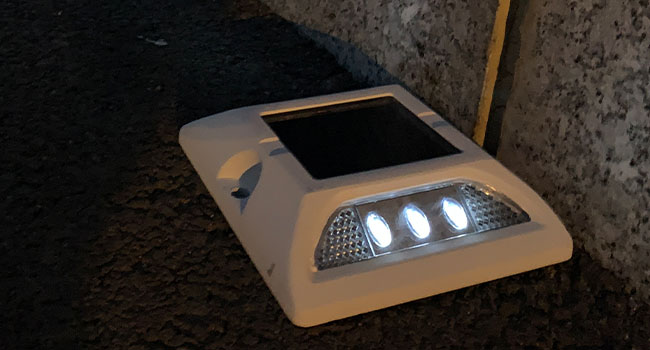
White road studs
White road studs are used to mark the edges of urban roads, especially in areas with high traffic volumes. Urban environment is complex, light conditions are diverse, white high reflective properties make it in a variety of light conditions, especially when the light is poor, can help drivers clearly identify the road boundaries, to guide the safe driving, to avoid due to the inability to see the edge of the road caused by the vehicle off the lane or collision accidents.
Yellow road studs
Yellow road studs are installed on the central divider of two-lane roads and highways to separate the traffic in opposite directions. The yellow color is bright, highly visible and can be seen clearly in low light. Drivers can clear the direction of the opposite traffic through the yellow road studs, accurately keep driving in their own lanes, reducing traffic accidents caused by misjudgment of the opposite traffic.
The uses of different color pins are summarized below:
|
Color |
Usage |
Common Location |
|
Red |
Marking the edge of the roadway |
Left side of highways and two-lane roads |
|
Amber |
Indicates center of roadway, divided lanes |
Freeway and two-lane highway center median |
|
Green |
Marks the edge of rural roads, indicates safe crossing areas |
Country roads |
|
White |
Marks the edge of city roads |
City roads |
|
Yellow |
Separates opposing traffic |
Central divider for two-lane roads and highways |
How do road studs work?
Common materials for road studs are plastic, glass and ceramic. Plastic road studs are lightweight, low-cost and corrosion-resistant, and are not easily eroded even when exposed to outdoor environments for long periods of time; glass road studs are highly reflective, reflecting light efficiently and providing drivers with clear visual guidance, but are relatively fragile and may break under the forceful crushing of vehicles; and ceramic road studs are highly abrasion-resistant, withstanding frequent friction from vehicles and having a longer service life. Road studs come in a variety of shapes and sizes, with special designs to enhance reflectivity and durability, such as prismatic designs that reflect light more effectively from different angles, allowing drivers to see clearly from different positions.
road studs are usually installed in a series of regular intervals at specific locations on the roadway, such as the center line of a two-lane highway, the edge of the roadway, and hazardous areas such as curves and intersections. This helps drivers to stay in their lane, safely negotiate curves and intersections, and maintain a safe distance between vehicles. In sharp turns, the road studs can remind drivers to slow down in advance and steer correctly. In some curves with poor visibility, the reasonable setup of road studs allows drivers to know the curvature and direction of the curves in advance, and to make appropriate adjustments to their driving maneuvers. At intersections, road studs can clearly indicate the direction of travel of vehicles to avoid vehicle conflicts at intersections.
Road studs can also highlight specific features of the road and areas that require drivers' attention, such as indicating the starting and ending points of speed limit reduction sections and the location of pedestrian crossings. Through clear road guidance, accidents caused by driver error are reduced and road safety is ensured. On roads near schools, road studs can be set at the ends of pedestrian crossings to remind drivers to slow down and avoid pedestrians. In some factories in front of the road, road studs can mark out the vehicle in and out of the channel, standardize the traffic order.
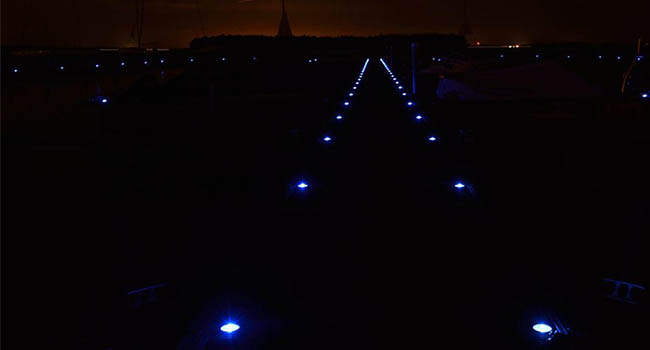
Why are road studs essential for road safety?
Enhanced visibility in adverse conditions
Road studs can significantly enhance visibility in inclement weather such as heavy rain, fog and snow. During heavy rainfall, the rainwater is pouring down, blurring the driver's vision, while the reflectivity of the road studs can penetrate the rain curtain and guide them in the right direction. There have been drivers driving highway in foggy days, surrounded by a blanket of white, almost lost their sense of direction, it is by the reflection of the road studs to arrive safely at their destination. In the snow-covered roads, the reflection of the road studs allows drivers to identify the location of the road, to avoid vehicles into the snow area. On the highway after a blizzard, the road surface is buried by thick snow, at this time the reflection of the road studs becomes the only basis for drivers to judge the road boundary, guiding them to move forward safely in the snow.
Night navigation
In the absence of natural light at night, road studs become the key to guiding drivers. Clearly marked lanes and road edges are important in preventing accidents. Statistics show that unclear lanes account for 15% of all accidents at night, and road studs reduce this risk. On remote roads without street lights, the reflection of road studs illuminates the road ahead for drivers and ensures nighttime driving safety. In some remote mountainous areas on the mountain highway, the night is dark, the reflection of the road studs is like a star light, accompanying the driver along the winding mountain road safety driving.
Effective traffic management
Road studs can mark lanes, indicate turns and guide drivers through complex intersections. At busy intersections, the different colors of road studs clearly indicate the direction of vehicles, making traffic smoother. In some complex traffic circle intersections, road studs can guide vehicles to move in an orderly manner, reducing traffic congestion and accidents. At intersections with high traffic flow, red road studs mark the no-parking zone, white road studs indicate the lane demarcation line, amber road studs guide turning vehicles, and they cooperate with each other to make the whole intersection in good order.
Low maintenance
Plastic and solar pins are low-maintenance.Plastic studs can be cleaned regularly without complicated maintenance operations; solar studs utilize solar power without the need to lay wires, greatly reducing the burden and cost of road maintenance personnel. Compared with traditional lighting facilities, solar road studs almost no maintenance, saving a lot of human and material resources. In some remote areas, the low-maintenance characteristics of solar road studs have obvious advantages, no need to worry about the aging of wires, power outages and other problems, and can continue to provide stable lighting and guidance for the road.
Environmentally friendly solution
Solar road studs utilize solar energy to contribute to sustainable development. It reduces electricity consumption and lowers the carbon footprint of road lighting compared to traditional road lighting. The use of solar road studs is in line with the green concept and contributes to the creation of a low-carbon transportation environment. In some ecological protection areas around the road, the use of solar road nails can not only ensure traffic safety, but also minimize the impact on the environment, to achieve the harmonious development of traffic and ecology.
Innovations in road stud technology
Passive road nails that is the traditional Percy Shaw invented reflective road nails, since 1934 the basic structure and function has not changed, its work depends on the car headlights after the reflection. At night, only when the light from headlights hits a passive road studs can the road studs reflect the light and provide guidance to the driver. Active road studs, on the other hand, do not rely on headlights and have an independent light-emitting or warning system. They are equipped with an internal power source and a light-emitting device, such as an LED light, which emits light on its own, providing drivers with continuous and clear guidance at night or in low visibility without the need for vehicle headlights.
Solar road studs are a major innovation in road lighting technology. During the day, sunlight is collected by solar panels and converted into electricity that is stored in batteries. At night or in low light, the stored electricity powers an LED light that is visible from up to 900 meters away. The technology utilizes sustainable resources, breaks through the limitations of traditional road lighting and improves road safety. In some remote areas, solar road studs do not require external power supply and are easy to install, which can effectively solve the road lighting problem. In some mountainous highways, due to the complex terrain, laying wires costly and difficult, the emergence of solar road studs perfect solution to the road lighting problem, for mountain residents and passing vehicles to provide security. Solar road studs can also automatically adjust the brightness according to the intensity of the light, to ensure that the lighting effect at the same time, maximize energy savings.
Road studs, although small, but in the road safety and security to assume a key role. From the different types and color meanings to the working principles and innovative technologies, they are indispensable in modern road infrastructure. By increasing visibility and directing traffic, road studs contribute significantly to reducing road accidents. With the development of technology, the future of road studs is expected to continue to innovate in function and design, further improving road safety and creating a safer travel environment for drivers. Perhaps the future road studs can be connected to the intelligent transportation system, adjusting the luminous pattern in real time according to the traffic flow and road conditions, providing drivers with more accurate road information, and injecting new vitality into the safe and efficient operation of road traffic.

